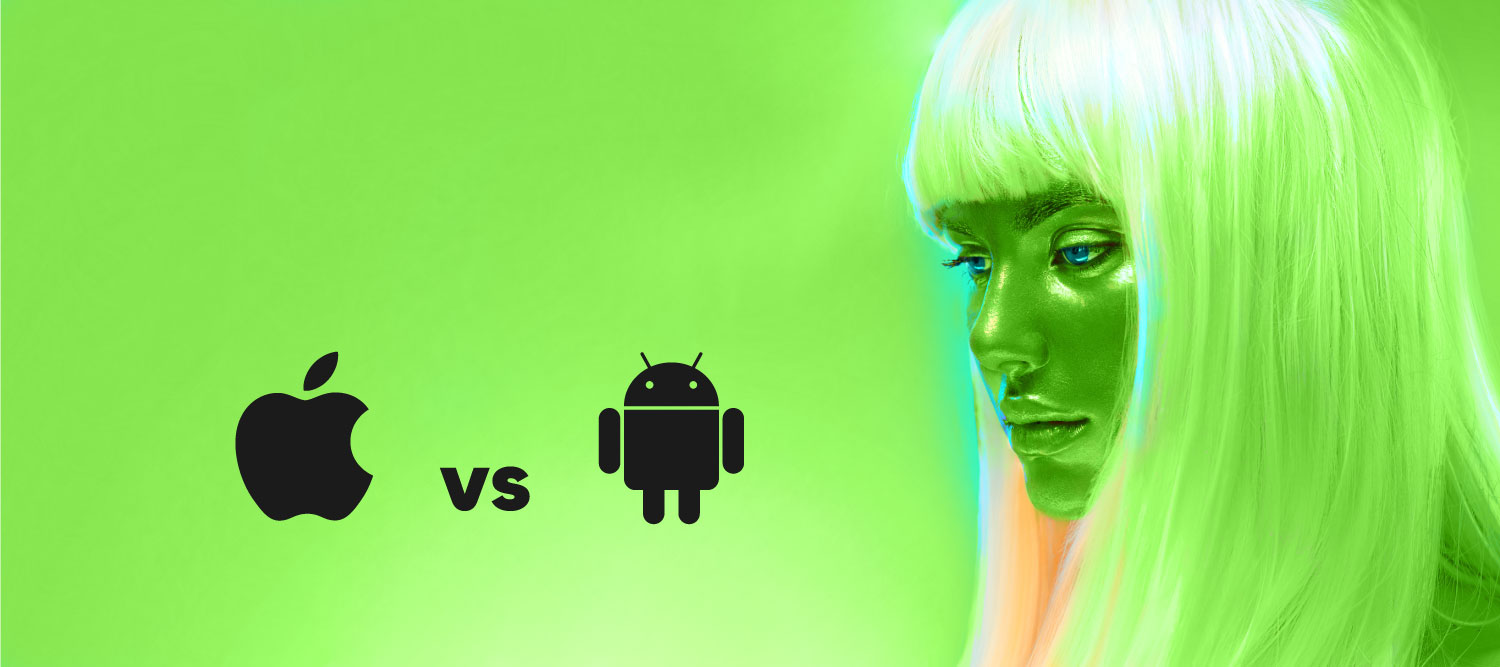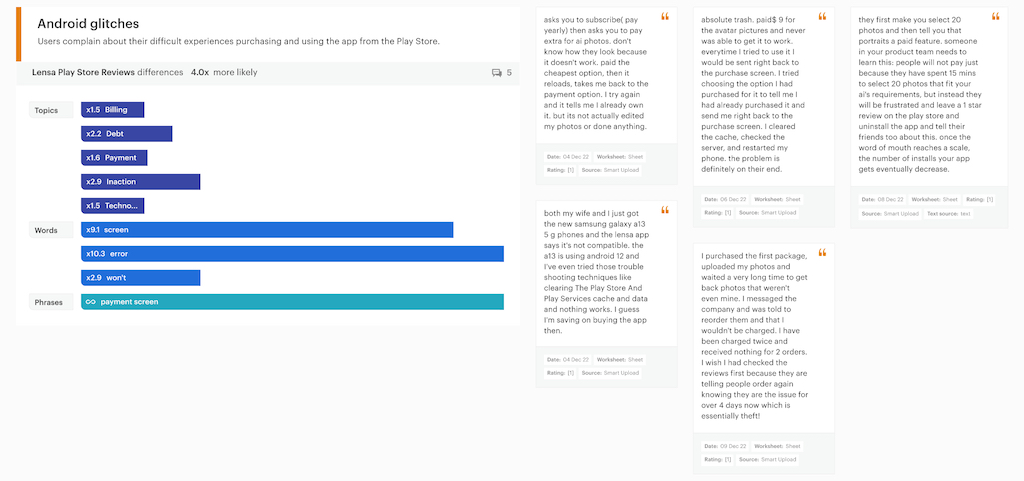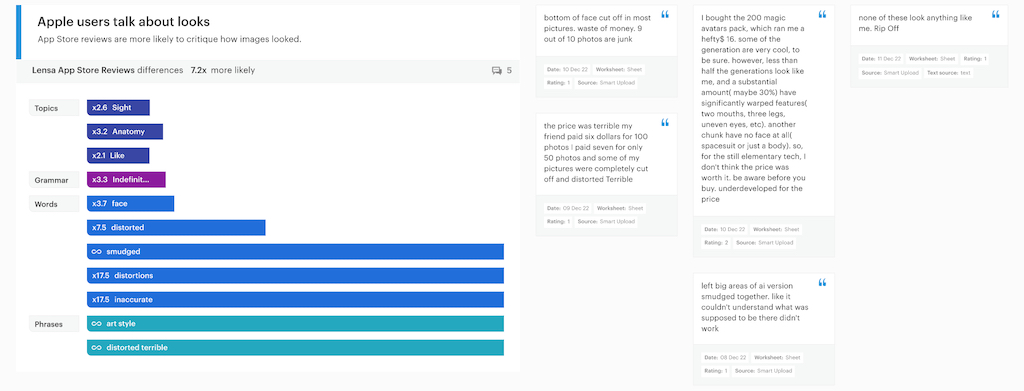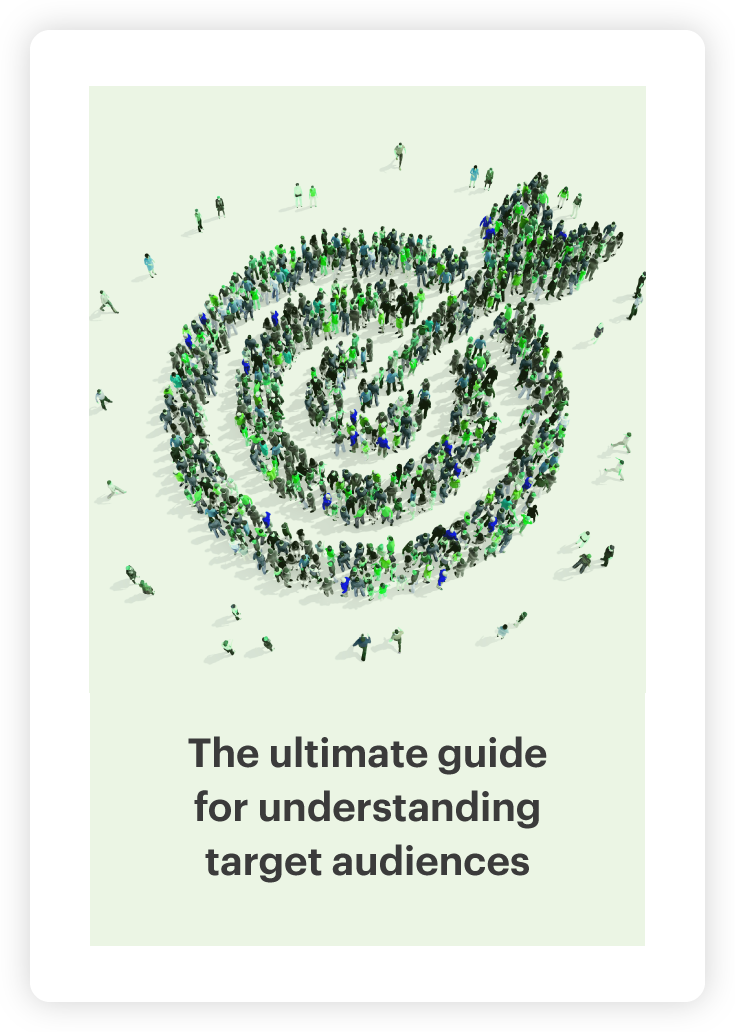Seeing through a different Lensa: App feedback analysis from iOS and android users

Have you been seeing a lot more AI-created avatars on your feed? Chances are you’ve stumbled upon someone using the Lensa AI imaging app. Following the release of its ‘magic avatars’ feature, the app has climbed to the number one download in Apple’s App Store, with a proliferation of AI-generated portraits bombarding social feeds.
While Lensa has been around since 2018, its new feature generates avatars comparable to those developed by digital artists. It’s this new wrinkle that has led to a surge in users paying a minimum of $6 and uploading a multitude of photos to the app for it to generate the images. However, beyond carefully curated social posts and bandwagon jumping, what do users really think of the app? To find out, we turned to text analytics.
We began by gathering Lensa reviews from Google’s Play Store and Apple’s App Store. Then, we uploaded to them into our text analytics tool. The beauty of Relative Insight’s feedback analysis software is that you can harness multiple data points to create compelling comparisons from a range of text data sources.
In this case, not only did we compare reviews from the stores of both operating systems, we used the feedback analysis tool to isolate 1* and 5* reviews from both Android and iOS users. This enabled us to delve into how people with different devices discussed what they liked and disliked about Lensa. The results not only tell us more about the app itself, but also offer a snapshot into the priorities of those with Android and Apple devices.
Android Users Focus On The Technical
Technical and performance capabilities are high priority for Android users. This theme was obvious in both the 1* and 5* Play Store reviews when compared to their Apple counterparts.
Unfortunately, poor technical performance played a huge part in Android users’ 1* reviews – with criticism aimed at both the operating system and the app itself. They were 10.3x more likely to talk about ‘errors’ with the app, while also using the word ‘won’t’ (as in won’t load) 2.9x more.

Much of this was about payments: Play Store reviews were 2.2x more likely to use words and phrases related to ‘debt’ and ‘billing’, such as ‘paid’ and ‘already paid’. They were also infinitely more likely to talk about a ‘payment screen’ bug impacting the app/Play Store. Reviewers also criticized the app’s pricing strategy, using words related to ‘restriction’, such as ‘limits’ and ‘limited’, infinitely more. In short, Android users were unimpressed that they had to part with their dollars to access the app.
“Paid $9 for the avatar pictures and was never able to get it to work. Every time I tried to use it I would be sent right back to the purchase screen.“
Technical aspects were prominent in positive reviews too. Play Store reviewers were 2.9x more likely discuss the app’s ‘ease’ of use. They were also 6.8x more likely to use ‘pretty’ as a qualifying adjective, describing the app as ‘pretty good’ or ‘pretty cool’.
Android users were also open minded. They used the word ‘edit’ infinitely more, signifying that they had edited their reviews to state that their photos had finally appeared, or that they’d received support from the app’s customer service team.
“Edit: excellent customer service. They got back to me right away and the problem was fixed. Was able to get incredible AI pictures I love. Now I recommend!“
Looks Matter For iOS Customers
Our feedback analysis found that App Store reviews focused much more on Lensa’s output, rather than how it worked. They were 3.2x more likely to use ‘anatomy’-related words, such as ‘face’, ‘eyes’ and ‘nose’.
As you would expect from users offering 1* reviews, they were unimpressed with the results. iPhone users were 7.5x more likely to use the word ‘distorted’, they described the images as ‘inaccurate’ 17.5x more, and were infinitely more likely to use the word ‘smudged’.

There have been concerns about racial and sexual aberrations within the app, and these over indexed in App Store reviews. Users were 2.5x more likely to talk about skin ‘color’ and 52.4x more likely to describe the app as ‘racist’, while also using the word ‘nude’ 35.0x more.
“None of the avatars looked anything like me. All of them look like an Asian descent person and I am Latina. Waste of money, overrated and inaccurate.“
Reviewers giving the app 5* were much happier with how they looked. The app exceeded their expectations and led to them expressing ‘surprise’ 4.8x more than Play Store reviewers. They were 5.3x more likely to use the word ‘wow’ and infinitely more likely to use the expressions ‘omg’ and ‘hehe’, highlighting their delight with the images generated for them.
“It’s been a while since an AI photo editing app or any of the sort has impressed me. I did the 100 avatars purchase and was amazed by the power of the AI and how well it can blend your face into just about any type of filter, background, and body from presets.“
“I’m stunned 😳 How is this possible? Wow 🤩”
Seeing Through The Lens Of Different Consumers By Using Text Analytics
Our feedback analysis highlights Android and iOS users’ varied preferences. The differing focus of reviews in the App and Play Stores demonstrates how two audiences gravitate to distinct aspects of the same app. Our analysis not only helps to inform Lensa about how to satisfy users on different operating systems; other brands looking to specifically target consumers with Android or Apple devices can use these insights to hone their messaging.
Android users prefer to focus on technical and performance aspects of applications. They’re more likely to complain about bugs and slow processing time, however, they’re also more likely to praise a good user experience and are willing to change their mind if they receive good customer service. Brands looking to attract Android users should emphasize technical details and prioritize user experience.
On the other hand, the visual element is critical to people using Apple devices. Brands offering aesthetically pleasing product design or software will engage this group, however, visuals falling below their expectations will disengage them.
Text analysis offers numerous ways to understand what matters to consumers. Through analyzing reviews by comparing different app marketplaces, we’ve not only differentiated between good and bad reviews, we’ve uncovered how outwardly similar customer segments view the same app through different lenses.
